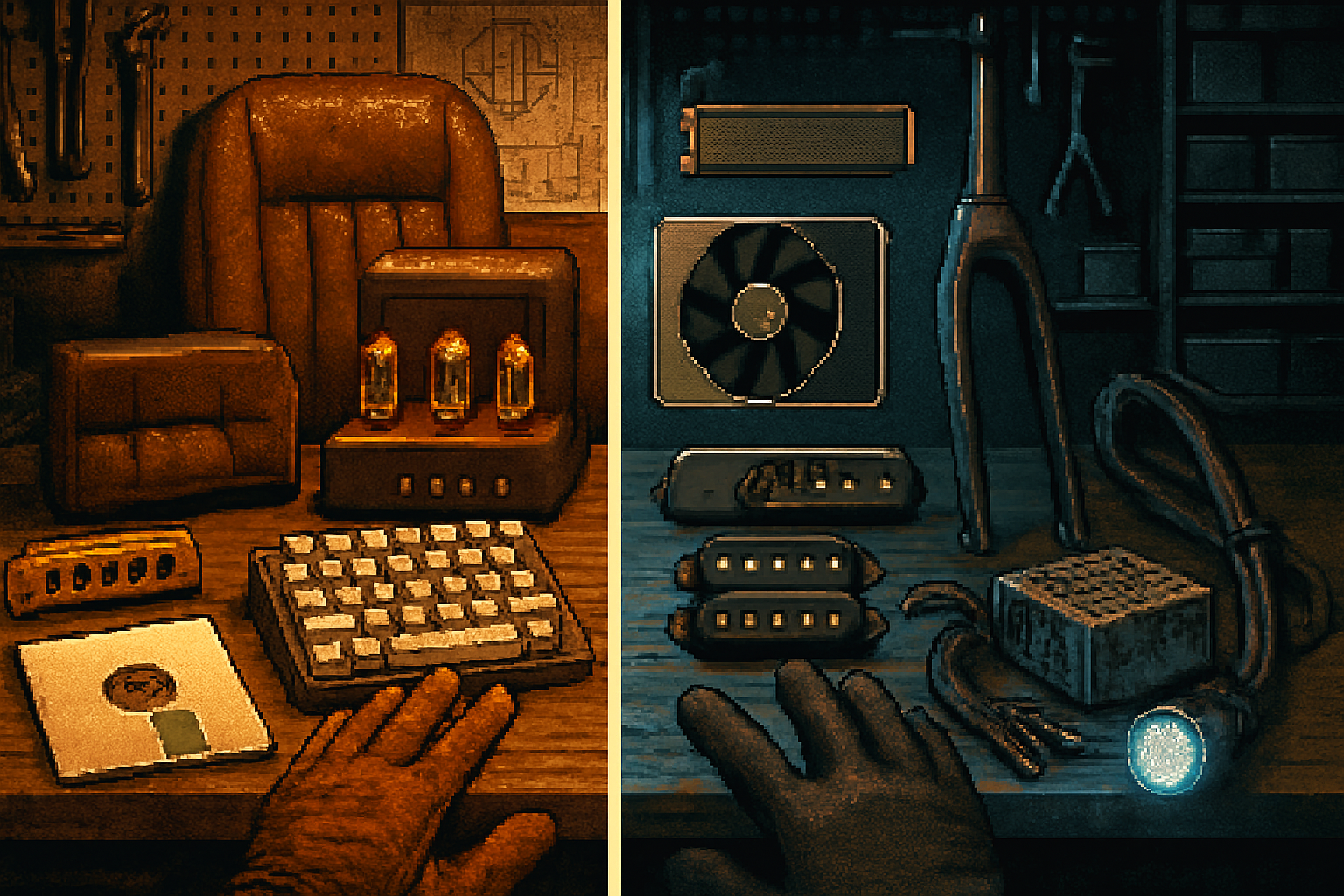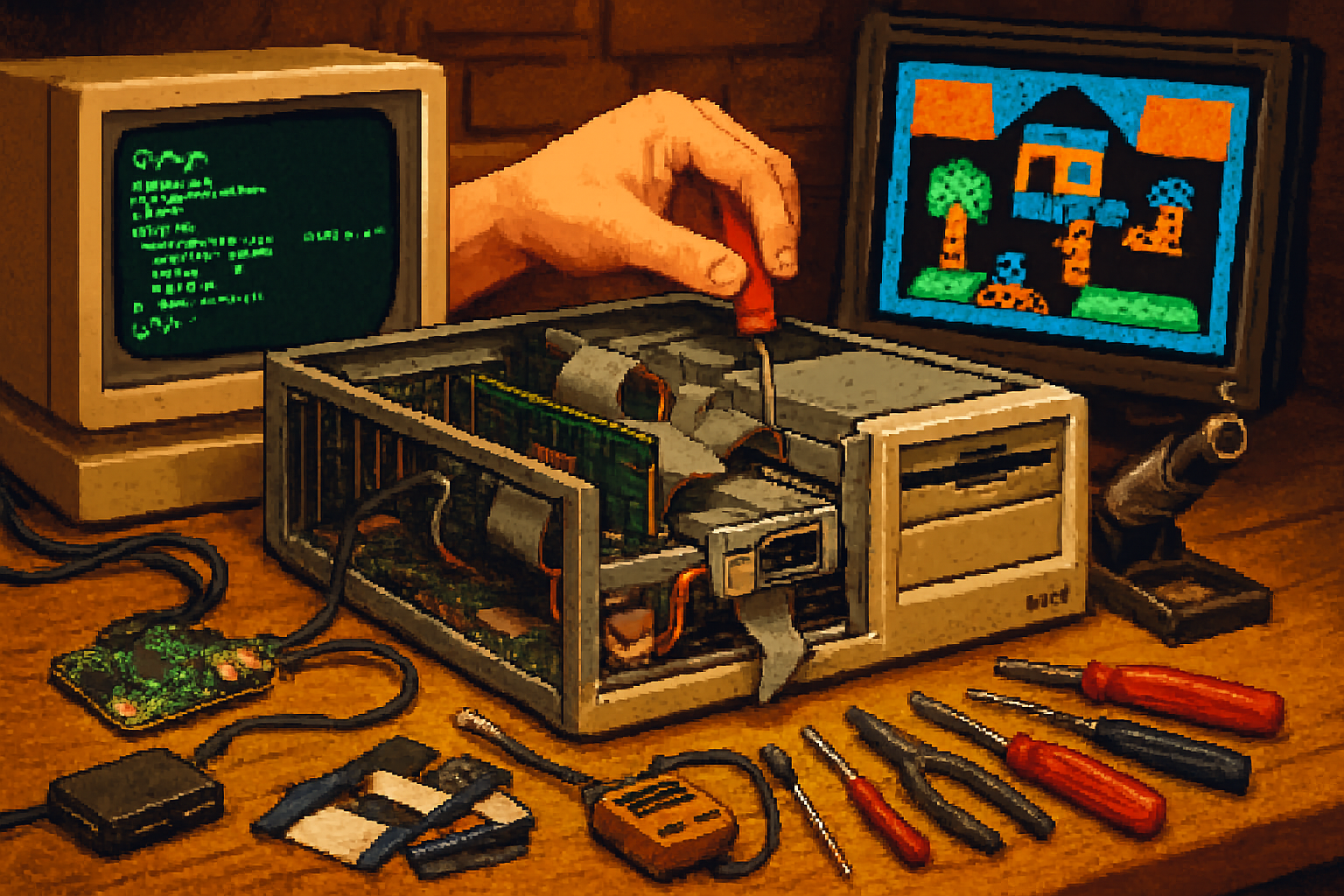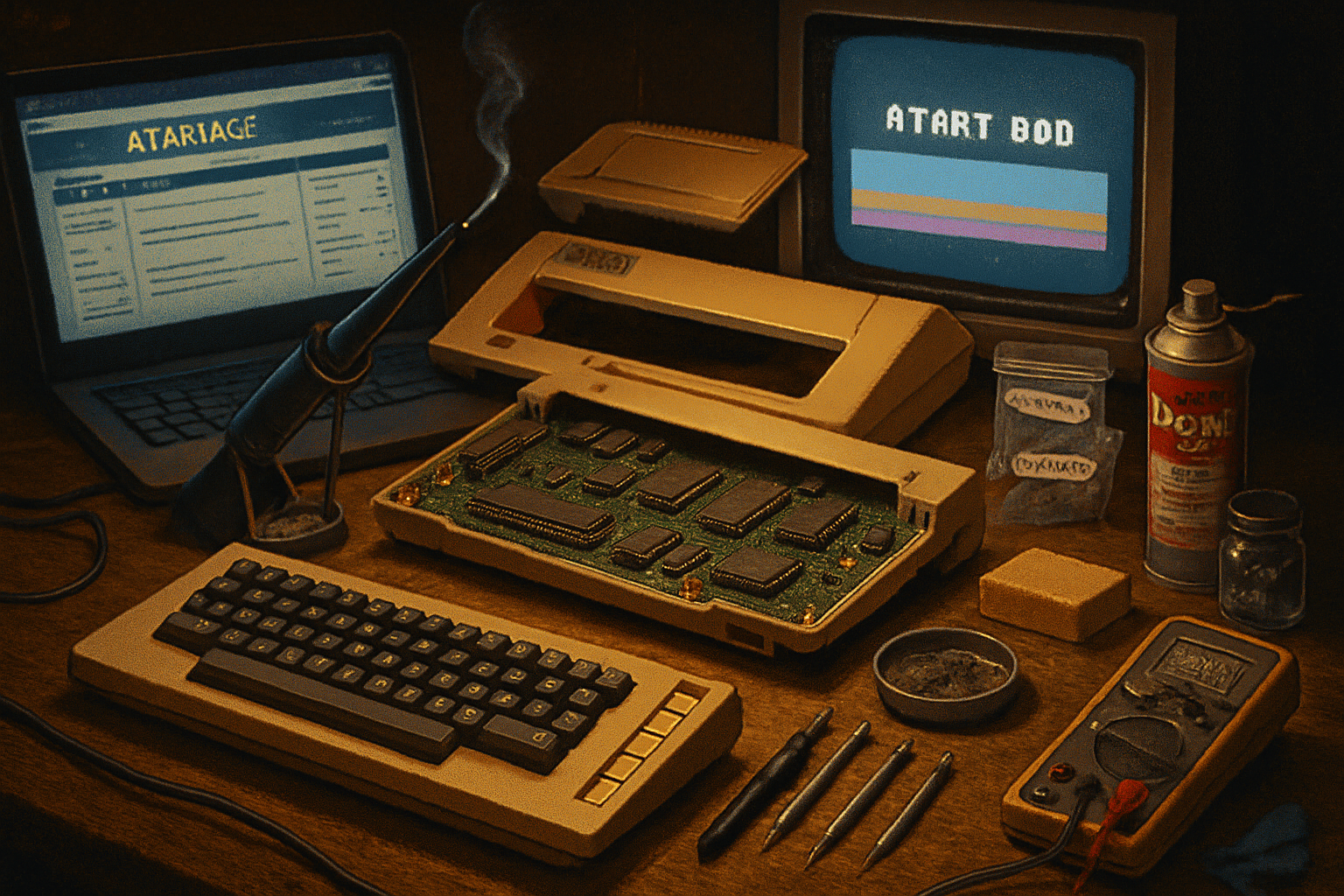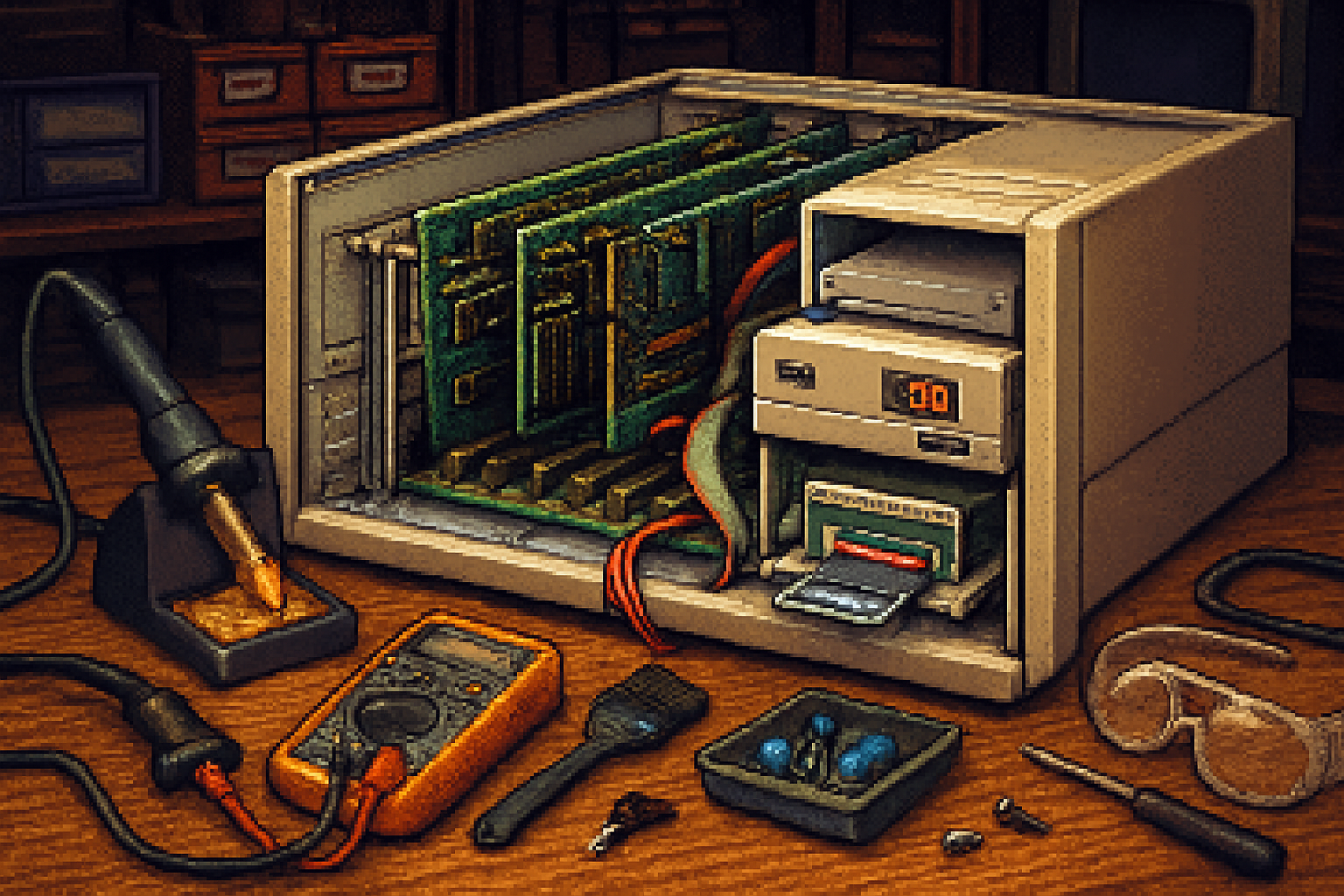· 6 min read
Retro vs. Modern: Debate the Most Worthwhile Components for Your Next Build
Deciding between purely vintage parts or mixing in modern components is a balancing act between authenticity, performance, and long-term reliability. This guide breaks down which parts are often best kept vintage for character and which you should modernize for safety, performance, and convenience-across PCs, cars, guitars, keyboards, synths and bikes.

Introduction
Building something with your own hands is as much a philosophical exercise as a technical one. Whether you’re restoring a classic car, assembling a retro-inspired PC, building a guitar, or renovating a synth, you’ll face the same question: keep the original/vintage parts for authenticity, or incorporate modern components for better performance and reliability? This article helps you decide which components are worth preserving for character and which are wise to replace or augment with modern alternatives.
What we mean by “retro” and “modern”
- Retro/vintage - original or period-correct parts (including NOS - new old stock) used in the era the device was made. These parts often bring authenticity, sound/feel, and visual character. See “
- Modern - contemporary components designed with current materials, technologies, and safety standards. These usually give improved performance, efficiency, durability, and compatibility with modern ecosystems.
Why this matters
- Authenticity vs. utility - Some builds are museum pieces; others must perform reliably in daily use.
- Safety and reliability - Modern materials and controls can eliminate hazards (electrical, mechanical) inherent to aging parts.
- Cost and availability - Vintage parts can be rare and expensive; modern parts are often cheaper and widely available.
General principles to guide decisions
- Preserve what defines the experience - If a component is central to the build’s character (tone of a tube amp, tactile feel of a vintage key switch), favor vintage.
- Modernize critical-safety and wear parts - Anything that affects structural safety or system stability should usually be modernized or at least thoroughly reconditioned.
- Think hybrid - Marry vintage aesthetics or signal path with modern power, control, or storage for a best-of-both-worlds result.
- Factor repairability and sourcing - If a crucial vintage part is irreplaceable and prone to failure, plan a maintenance strategy or find a modern-compatible substitute.
Components often worth keeping vintage (and why)
Acoustic and tonal elements
- Guitar pickups, tube preamps, certain speaker cones - vintage components can have unique sonic signatures that collectors and players prize. For tube amps, the tubes themselves and transformers shape tone in ways modern parts can only emulate imperfectly (
- Synth modules and filters - analog circuits from particular eras may have characteristics that are difficult to reproduce digitally.
Aesthetic and tactile parts
- Dials, knobs, badges, keycaps, wooden bodies, patinaed metalwork - authenticity often depends on original finishes and ergonomics (e.g., the feel of a vintage mechanical keyboard switch) (
Uniquely machined or formed mechanical parts
- Certain bearings, cast housings, and hand-formed joints can be historically accurate and bespoke; when functional, they contribute to value.
Components you should usually modernize (and why)
Power delivery and batteries
- Modern power supplies are far safer and more efficient. Old electrolytic capacitors, power regulators, or batteries degrade over time and can fail catastrophically; electrolytic capacitor lifespan is a real concern in older electronics (Electrolytic capacitor - lifespan).
Storage and core compute (for electronics/PCs)
- Move to modern storage (NVMe or SSD) and modern networking/compute where performance or data integrity matters. NVMe/SSD offers large gains over old spinning disks and controllers (NVMe).
Braking, steering, and structural safety (vehicles/bicycles)
- Brake systems, tires, steering linkages, and critical fasteners should meet modern safety standards; lightweight modern materials (e.g., composites) and improved geometry can greatly increase safety and performance.
Mechanical wear items
- Bearings, seals, hoses, belts, and other consumables should be modern replacements; modern materials often last longer and perform more consistently.
Networking and interoperability
- For devices plugged into modern ecosystems, updating communications (Bluetooth, Wi‑Fi, USB standards) improves usability.
Domain-specific recommendations
PCs and Home Computers
- Keep vintage - case, keyboard (if you love the feel), certain expansion cards for authentic retro computing.
- Modernize - PSU, storage (SSD/NVMe), memory (where needed), and networking for reliability and speed. Consider a hybrid approach: an original-era motherboard restored for display and a modern internal drive and PSU hidden inside for daily use.
Guitars and Amplifiers
- Keep vintage - wood bodies with desirable tonal properties, original pickups and tone pots if they’re in good shape.
- Modernize - electronics that affect reliability (output jacks, power supplies on amps), internal wiring if brittle, and safety earthing. Consider modern switchcraft jacks and modern caps made to vintage specs if you want reliability without changing tone.
Cars and Motorcycles (Restoration vs Restomod)
- Keep vintage - body panels, interior styling, engine blocks (if rebuildable and the goal is authenticity). Restoring an engine with original-type internals preserves provenance and value.
- Modernize - brakes (disc conversions), tires, lighting (LED upgrades that preserve lens look), engine management (ECUs) or fuel systems for emissions and reliability. The concept of a “
Synths and Audio Gear
- Keep vintage - signal path components that define the sound-filters, VCOs, and certain op-amps in original modules.
- Modernize - power supplies and connectors, which improve reliability and noise performance; retrofit with regulated supplies rather than relying on aging transformers and caps.
Bicycles
- Keep vintage - frames (if geometry and material still meet your needs), certain vintage aesthetics.
- Modernize - brakes, cables/housings (or hydraulic conversions), tires, and drivetrain components for safety and performance.
How to choose: a practical decision framework
- Define priorities - authenticity, daily usability, safety, or resale value.
- Make a part list and categorize each item - Character (tone/look), Safety/Critical, Consumable, Interfacing (connectors/communications).
- For each item, ask - does failure create a safety hazard? Does modernizing break the core character? Is a modern upgrade reversible?
- Cost-benefit and sourcing - estimate costs and check availability of vintage parts (are there NOS or reliable repros?).
- Testability - is the vintage part testable and serviceable? If not, plan a replacement path.
Sourcing, verification and authenticity
- Confirm authenticity - use serial numbers, provenance, and trusted sellers for high-value parts.
- Consider reputable reproduction parts - good reproductions can match aesthetic and functional needs without rare or unreliable originals.
- When buying NOS, inspect storage conditions and test thoroughly-some parts degrade even unused.
Maintenance and reliability strategies for hybrid builds
- Rebuild consumables - replace seals, bearings, electrolytics, and old spent lubricants even if other parts remain vintage.
- Modularize - design the build so modernized components are easy to swap without destroying the original elements.
- Logging and backups - for electronics, ensure you can back up firmware/configurations before swapping components.
Cost, value, and resale considerations
- Restoring original components can increase collectible value but may reduce everyday usability.
- Modernizing for safety/performance often increases everyday value but may reduce collector value in some markets-research what collectors value in your niche.
Sample use-cases
- Daily-driver classic car (commute + weekend shows) - keep vintage looks, modernize brakes/tires/electrical for safety.
- Show-only musical amp - prioritize original transformers and tubes; rebuild and keep stock wiring for authenticity.
- Retro gaming PC for daily use - keep physical case and keycaps, modernize PSU, storage, and GPU for stability.
Quick checklist before you commit
- Identify non-negotiables (must-stay vintage) vs. must-modernize (safety/essential function).
- Verify availability of parts (vintage and modern alternatives).
- Decide whether changes must be reversible.
- Budget for reconditioning consumables even when keeping original parts.
Conclusion
There’s no single correct answer to retro vs. modern-only trade-offs that depend on your goals. Aim to preserve what defines the soul of your build and modernize what keeps it safe, reliable, and usable. The hybrid approach-careful selection of original parts complemented with modern power, safety, and storage-often delivers the best mix of authenticity and real-world performance.
Further reading and references
- New old stock (NOS): Wikipedia
- Electrolytic capacitor - lifespan: Wikipedia
- NVMe: Wikipedia
- Vacuum tube amplifier: Wikipedia
- Mechanical keyboard: Wikipedia
- Restomod (car restorations with modern upgrades): Wikipedia
Checklist (copyable)
- Purpose: ____ (show, daily use, performance)
- Non-negotiable vintage elements: ____
- Must-modernize for safety/performance: ____
- Parts to inspect/replace (consumables): ____
- Estimated budget: ____
Good luck with your build-choose the parts that make the result feel right for you, and plan for safety and reliability where it counts.



